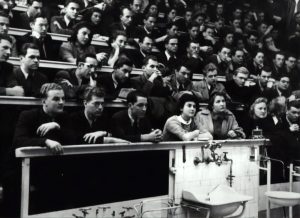Courtroom Dynamics: Beyond Traditional Legal Strategies
Courtroom dynamics are constantly evolving, requiring legal professionals to adapt and employ innovative strategies to achieve success in the courtroom. Gone are the days when traditional legal techniques were enough to sway a judge or jury. As the legal landscape becomes increasingly complex, it is crucial for lawyers to understand and utilize the dynamic nature of modern courtrooms. In this article, we will delve into the concept of courtroom dynamics and explore how attorneys can go beyond traditional methods to achieve favorable outcomes for their clients.
Understanding Courtroom Dynamics
Before we dive into alternative legal strategies, it is important to have a clear understanding of what courtroom dynamics actually entails. Simply put, courtroom dynamics refers to the various elements and factors that come into play during a trial or court proceeding. These elements can include the judge, jury, witnesses, evidence, and the overall atmosphere in the courtroom.
Each courtroom has its own unique dynamics, influenced by the presiding judge, the nature of the case, and even the location of the trial. This means that what may work in one courtroom may not necessarily be successful in another. Therefore, it is crucial for attorneys to have a deep understanding of the dynamics of the courtroom they are appearing in.
The Importance of Adapting to Changing Dynamics
As mentioned earlier, traditional legal strategies may no longer be enough to secure a win in the courtroom. This is due to the fact that courtroom dynamics are constantly changing, and lawyers must be able to adapt to these changes in order to effectively advocate for their clients. In today’s world, where technology and social media play a significant role, attorneys must keep up with these advancements and use them to their advantage.
One example of how courtroom dynamics have changed is the use of electronic evidence. In the past, evidence was primarily limited to physical documents and witness testimonies. However, with the increasing use of technology in our daily lives, electronic evidence such as emails, text messages, and social media posts have become crucial in many cases. Lawyers must now be well-versed in handling and presenting electronic evidence to effectively represent their clients.
Going Beyond Traditional Strategies
So, what can lawyers do to go beyond traditional legal strategies and improve their success rate in the courtroom? Here are a few techniques to consider:
1. Utilize Storytelling
One way to engage and persuade a judge or jury is by using storytelling techniques. Humans are naturally drawn to stories, and they can be a powerful tool in the courtroom. Instead of relying solely on facts and evidence, lawyers can weave a compelling narrative around their case, making it easier for the judge or jury to understand and empathize with their client’s position.
2. Master the Art of Body Language
A lawyer’s body language plays a crucial role in the courtroom, as it can convey confidence, credibility, and even emotion. By mastering effective body language, lawyers can appear more persuasive and influential in the eyes of the judge or jury. This can be achieved through practice and awareness of one’s body language, as well as studying the body language of others in the courtroom.
3. Use Technology to Your Advantage
In today’s digital age, lawyers have access to a plethora of tools and software that can enhance their legal strategies. From creating compelling visual aids to conducting thorough research, technology can significantly improve a lawyer’s effectiveness in the courtroom. For instance, utilizing a trial presentation software can help organize and present evidence in a more impactful and efficient manner.
Conclusion
Courtroom dynamics can be unpredictable, and it is essential for lawyers to be able to adapt and utilize alternative strategies to achieve success in the courtroom. By understanding the dynamics of the courtroom, adapting to changing trends, and employing innovative techniques, attorneys can go beyond traditional legal strategies and better serve their clients.
Remember, every case and courtroom is different, and there is no one-size-fits-all approach to winning a trial. However, by constantly learning and evolving with the changing dynamics, lawyers can increase their chances of achieving favorable outcomes for their clients.











